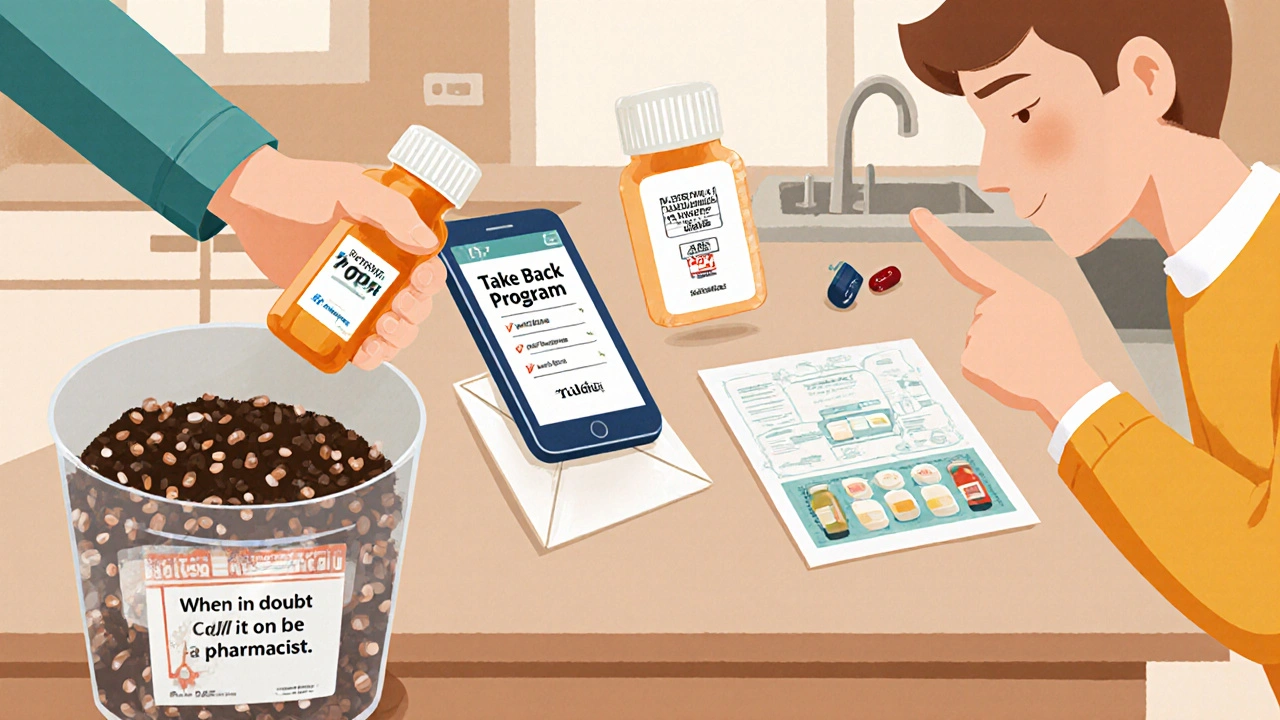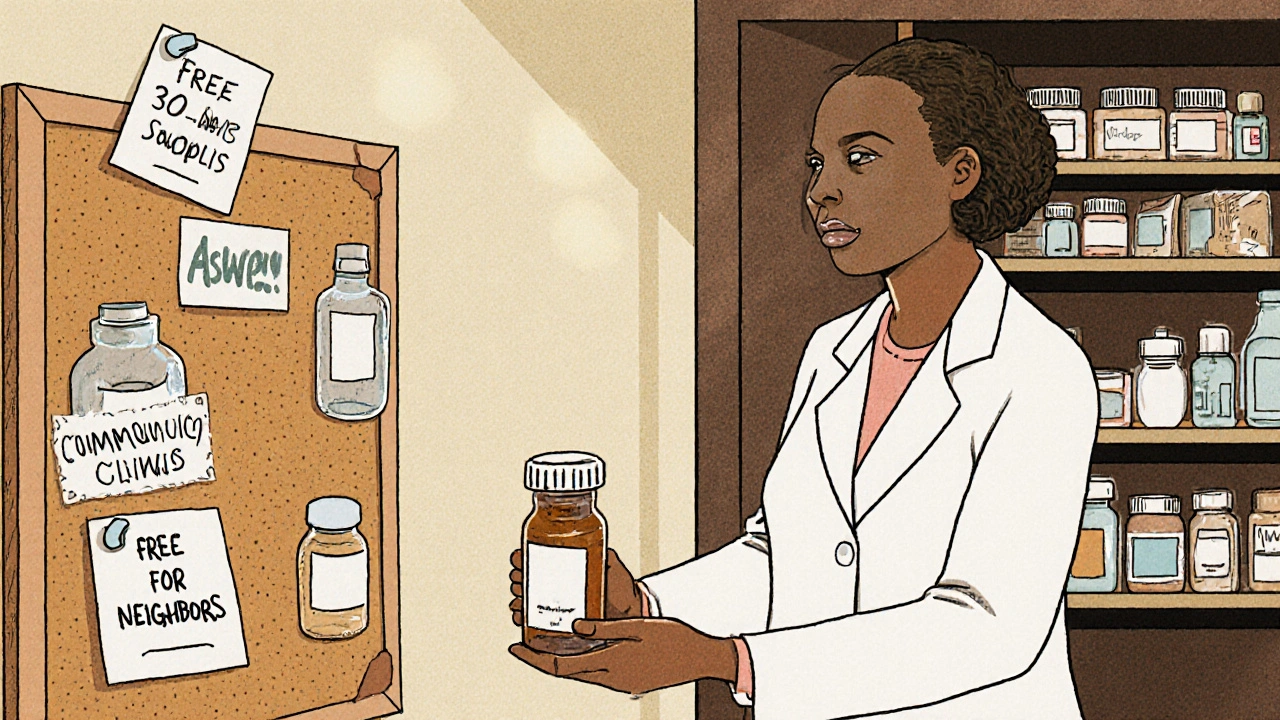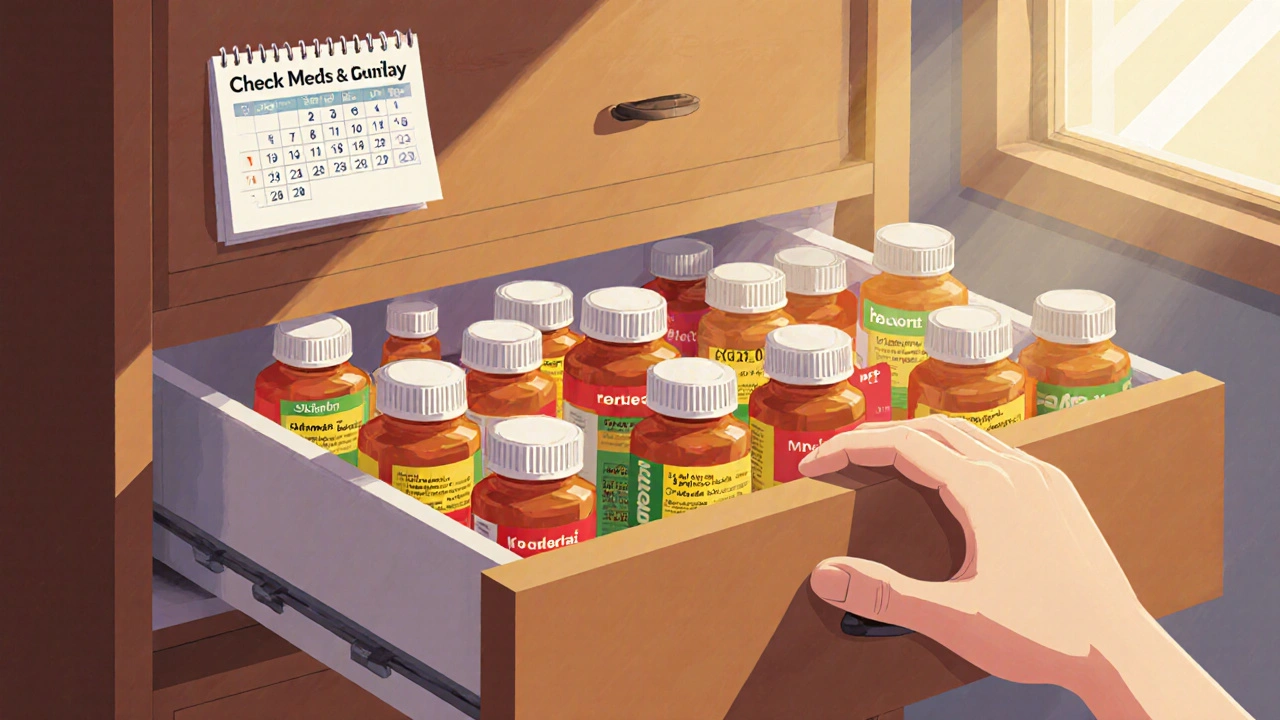Every year, millions of pounds of perfectly good medication end up in landfills or incinerators-not because they’re ineffective, but because no one checked the date, stored them right, or ordered too much. In the U.S., healthcare facilities throw away an estimated $20 billion worth of unused, unexpired drugs annually. That’s not just money lost-it’s wasted resources, avoidable pollution, and missed chances to help patients who can’t afford prescriptions. The good news? You don’t need a hospital budget to stop this. Whether you’re managing meds for a family member, running a small clinic, or just trying to keep your medicine cabinet from becoming a landfill, there are simple, proven ways to cut waste without risking safety.
Store Medications Correctly-It’s Not Just About the Cabinet
Most people think if a pill bottle sits on the counter, it’s fine. It’s not. Temperature and humidity are silent killers of drug potency. Insulin, thyroid meds, and many antibiotics need to stay between 36-46°F (2-8°C). If your fridge is too cold, too warm, or gets opened too often, these drugs degrade faster than their labels suggest. Room-temperature meds like statins or blood pressure pills? Keep them at 68-77°F (20-25°C). Humidity turns tablets into mush and capsules into sticky messes. Don’t store meds in the bathroom. Ever. The steam from showers breaks them down. A cool, dry drawer in a bedroom or home office is better than any medicine cabinet.Use FIFO-It’s Not Just for Groceries
FIFO stands for First-In, First-Out. It’s a simple rule: when you get new medication, put it behind the old stuff. That way, the oldest bottles get used first. This isn’t just for pharmacies-it works for households too. When you refill a prescription, take the old bottle out of the drawer, use it up, then put the new one in. Do this every time. Set a reminder on your phone: “Check meds every Sunday.” Spend five minutes lining up bottles by expiration date. You’ll catch ones that are about to expire before they become trash.Ask for Smaller Quantities
Doctors often prescribe 90-day supplies because it’s convenient. But if you’re on a new medication, or if your dose changes often, you might not need that much. Ask your pharmacist: “Can I get a 30-day supply instead?” Many insurers allow this without extra cost. A 2019 study at Johns Hopkins found that patients who got smaller doses of chronic meds-like blood thinners or antidepressants-wasted 37% less. Why? Because if you don’t feel well on the drug, or if your condition improves, you don’t end up with a drawer full of pills you’ll never take. This is especially true for antibiotics. If you finish your course early, don’t save the rest. Return them to a take-back site.
Know When to Use Take-Back Programs
Never flush pills down the toilet or toss them in the trash. The EPA says that’s how pharmaceuticals end up in drinking water and rivers. Instead, use a drug take-back program. As of January 2023, there are over 11,000 registered collection sites across the U.S.-in pharmacies, police stations, and hospitals. Find yours at DEA’s website (even if you’re outside the U.S., most countries have similar programs). Some pharmacies even offer mail-back envelopes. If you’re stuck with expired meds and no take-back is nearby, mix them with coffee grounds or cat litter in a sealed bag before throwing them out. It makes them unappealing and less likely to be dug up by kids or animals.Track Expirations with Color-Coded Labels
A pharmacist in Bristol told me she uses colored stickers on bottles: red for meds expiring in 30 days, yellow for 60, green for over 90. It’s low-tech, but it works. You can do the same at home. Buy a pack of sticky notes or use a permanent marker. Write the expiration date on the label. Put a dot next to it. Check every Friday. If you see a red dot, use it that week-or give it to someone who needs it. Many clinics accept unopened, unexpired meds for redistribution. Ask your local health center. If you’re unsure whether a drug is still good past its date, don’t guess. Call your pharmacist. The FDA says many pills remain effective years after expiration, especially if stored right. But if it’s a life-saving drug-like an EpiPen or insulin-never risk it. When in doubt, replace it.Use Technology-Even the Simple Kind
You don’t need a $10,000 system to track meds. Apps like Medisafe or MyTherapy let you set reminders for when to take pills and when they expire. They’ll even alert you if a refill is due. For clinics or families managing multiple prescriptions, a simple spreadsheet works. List each drug, the date it was filled, the expiration, and how many pills are left. Update it every week. One rural clinic in Ohio reduced waste by 29% just by doing this. They also started a “meds swap” board-patients could leave unopened, unexpired pills for others who couldn’t afford them. No money exchanged hands. Just trust and organization.
Train Everyone Who Handles Medications
If you’re caring for someone with complex meds-like a parent with diabetes and heart disease-make sure everyone involved knows the basics. How to check expiration dates. How to store insulin. What to do if a pill looks discolored. The World Health Organization says staff training reduces waste by 28%. That applies to families too. Sit down for 15 minutes every month and go over the meds together. Make it part of your routine, like checking the smoke alarm. If you’re a caregiver, write down a quick cheat sheet: “When in doubt, call the pharmacist.” Keep it on the fridge.Don’t Let Expiration Dates Trick You
There’s a myth that meds turn toxic after their expiration date. They don’t. Most lose potency slowly, not suddenly. The FDA’s 2023 guidelines say many drugs remain safe and effective for years beyond the printed date-especially if kept cool and dry. But here’s the catch: you can’t assume that for every drug. Liquid antibiotics, eye drops, and injectables degrade faster. EpiPens and nitroglycerin? Never use past expiration. For pills like aspirin or acetaminophen, if they’re stored properly and look normal, they’re probably fine. But if they smell weird, are crumbly, or have changed color, toss them. Don’t take chances with your health.Start Small. Build Habits.
You don’t need to overhaul your whole system tomorrow. Pick one thing: start with FIFO. Or set a weekly reminder to check expiration dates. Or ask for 30-day fills. Do one thing well, and it becomes habit. Over time, you’ll notice fewer pills piling up. Fewer trips to the pharmacy for replacements. Less guilt about throwing stuff away. And you’ll be helping the environment without spending a fortune.Can I still use medicine after its expiration date?
Many pills and tablets remain effective and safe for years after their expiration date, especially if stored in a cool, dry place. The FDA has found that 90% of tested drugs were still potent 15 years past expiration. But this doesn’t apply to liquids, injectables, or life-saving drugs like insulin, EpiPens, or nitroglycerin. If the medication looks discolored, smells odd, or is crumbling, don’t use it. When in doubt, ask your pharmacist.
What’s the best way to dispose of expired medications?
The safest way is through a drug take-back program. Over 11,000 collection sites exist across the U.S., including pharmacies, hospitals, and police stations. If none are nearby, mix pills with coffee grounds or cat litter in a sealed container before throwing them in the trash. Never flush them unless the label specifically says to-only 15 opioids are on the FDA’s flush list. Flushing other drugs pollutes water supplies.
How can I prevent wasting prescription meds at home?
Ask your doctor or pharmacist for smaller quantities, especially for new prescriptions. Use FIFO-put new meds behind older ones. Check expiration dates weekly. Store meds properly-away from heat, moisture, and light. Use a pill organizer with reminders. If you don’t need all the pills, return unopened ones to a take-back site. Many clinics accept donations of unexpired, sealed meds for patients in need.
Are there free tools to track medication expiration dates?
Yes. Free apps like Medisafe, MyTherapy, and Pill Reminder let you input your meds and set alerts for refills and expirations. For a low-tech option, use sticky notes or a simple spreadsheet. Write the drug name, expiration date, and how many pills remain. Update it every week. Many pharmacies also offer free expiration tracking through their patient portals.
Why do pharmacies give 90-day supplies if they cause waste?
Pharmacies offer 90-day supplies because it’s cheaper to process one refill than three. It’s also more convenient for patients. But if your dose changes often, or you’re trying a new medication, you might not need that much. You have the right to ask for a 30-day supply. Most insurers allow it without extra cost. Reducing the initial quantity is one of the most effective ways to cut waste-studies show it reduces unused pills by up to 37%.
